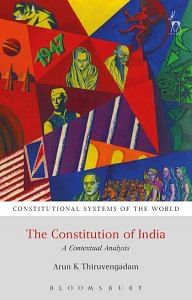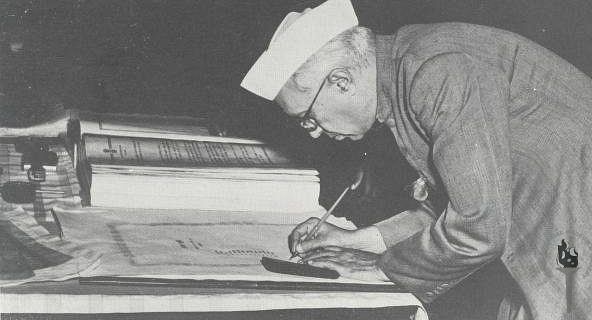In ‘The Constitution of India: A Contextual Analysis’, Thiruvengadam captures the progression of law through sociopolitical factors, and development perspectives.
Has the Supreme Court been less willing to push back against the powerful Narendra Modi government?
The biggest headlines in the last few months, perhaps, give a perception that it has been. But in 2015, it was the same court that struck down the National Judicial Appointments Commission Act. It derailed the Modi government’s first significant attempt in expressing how it wants to use its majority.
Arun K. Thiruvengadam’s The Constitution of India: A Contextual Analysis lucidly explains this obvious paradox.
The author argues that the court as a whole rarely asserts itself against a strong government and the legislature on issues where its own interests have not been at stake.
In India’s seven decade progression of law, several attempts have been made to record and contextualise the march of law. This book stands out in its attempt to track that progression through socio-political factors, and historical development perspectives and not by simply analysing judgments of the Supreme Court, laws and amendments passed by the parliament.
But Thiruvengadam’s book also confirms the generally held view that the Supreme Court’s jurisprudence is often a reaction to the existing political setting and not a consistent approach to issues.
There is an audacious attempt to track the court’s travails against political currents.
Till the 80s, the court’s focus on labour reforms and rights of the working class was striking but in the 90s, as liberal economic policies were introduced by the government the court began to lend its support and actively aid liberalisation politics.
For example, the rise of coalition politics in India in the 90s also marked the beginning of the Supreme Court’s ‘good governance’ rulings. The court in that decade was dealing with what an active parliament must have. For example—cleaning up Taj Mahal and Delhi’s air (unfortunately, these cases have continued even as the politics changed), issues of sexual harassment in the Vishakha case, female foeticide, and regulating sale of hazardous pesticides, among others.
And as an urban middle-class country began to take shape in the 2000s, the court also made a shift in its approach to protect this new India. Some of the issues the court dealt with in this decade, much before the executive did, included live-in relationships, recognising rights of single mothers and domestic violence.
Finally, unlike other legal scholarship, the book is written in crisp language. Anyone seriously interested in the working of India’s institutions must not miss this one.
Arun K.Thiruvengadam is a professor of Law at the School of Policy and Governance, Azim Premji University, Bengaluru, India.

“The Constitution of India: A Contextual Analysis”, a book by Arun K.Thiruvengadam is published by Bloomsbury Publishing.



